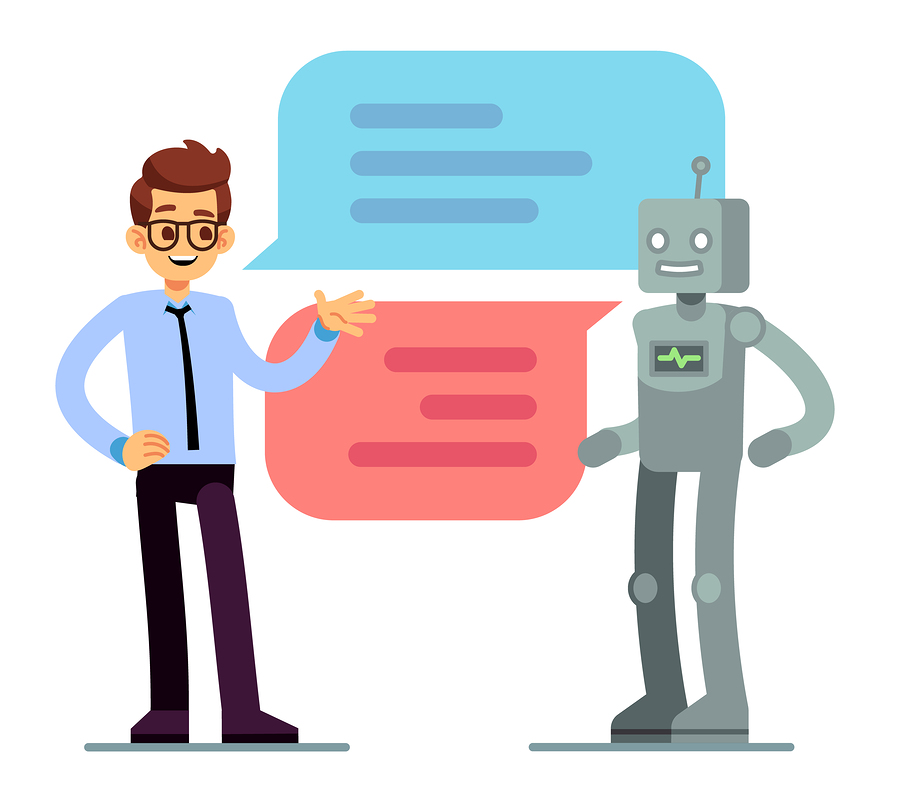What are Translation Bots and How Do They Compare to Human Translators?
The availability of machine translation is without a doubt on the rise and with it has come far better accuracy than ever before. This includes Google Translate, Babel Fish, Bing Microsoft Translator PROMT, and ImTranslator. One of the key features of machine translations is using bots. This is a simplified word for robots.
What are Translation Bots?
Translation bots resemble AI virtual assistants which concentrate on language translations. They are able to interact either verbally or through a text with the user. They are like a messenger service as you are able to communicate with them via either text or voice and they will translate the words, phrases, and sentences into any language you choose. The “bot’ really means a robot is a communicator and no human translator is involved in the process. Many business websites use bots for their customer service. The bots are simply in place to answer any simple inquiries or questions posed by online questions.
GETTING IN TOUCH WITH US
Blog - Getting In Touch With Us
Translation bots are linked to a translation system on the web. When you go online to seek a machine translation service the bot will communicate via a chat window and you can send either a text or chat message. Because a translation bot uses artificial intelligence it’s like communicating with a real person. The bot is quite human and when you start a conversation such as what’s the word for hello in Spanish, you will get an immediate response. They tend to understand what you want without you having to repeat it.
Examples of Bots used in Translation
The following are the key examples of translation bots:
- Facebook Page and Messenger Translator.
- Instant Translator is both a Viber and Facebook bot and is able to translate up to ten languages.
- Google Translate is bots that use Google’s translate service.
- Discord Translator is a bot created in order to facilitate communication among the gaming community and it supports at least 100 languages on the Discord chat board.
- Ru Bots can be found at Translate.ru and are commonly used to translate Skype messages.
How Translation Bots Work
Bots aren’t translation platforms or services in themselves but act as an interactive interface for any translation service. Their role is to just connect a user directly to a translation service using an AI-powered voice-based or text interface.
They pick up the information required and direct it to a machine translation service, such as Google Translate, Skype Translator, Babelfish, or Facebook Translator.
Do Translation Bots do a Better Job than Human Translators?
There is still no evidence suggesting that a bot and its machine translation service relationship produces a better translation than a human translator. No machine translator has yet been able to completely master the cultural inferences in a language or idiomatic expressions that rarely make sense with a word-for-word translation.
They have managed to do a reasonable translation of quite simple words and expressions. This can be quite helpful when only simple translations are required. There are some translation services that offer the services of a bot, but when the text is detected as being too complex the user is directed to pay for the services of a human translator if they are after an accurate translation.
Conclusion
No one yet knows if translation bots and their associated machine translation services are ever going to become the norm when even a sophisticated translation is required. For the moment they provide a quick solution to a simple translation while harder more important translations that require super accuracy still remain the domain of human translators. It would be quite dangerous to depend on bots and their associated language services for key legal and medical documents as accuracy can’t be assured.




